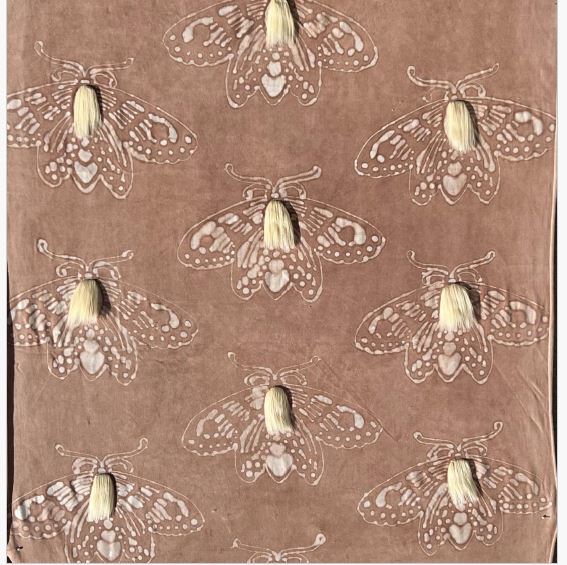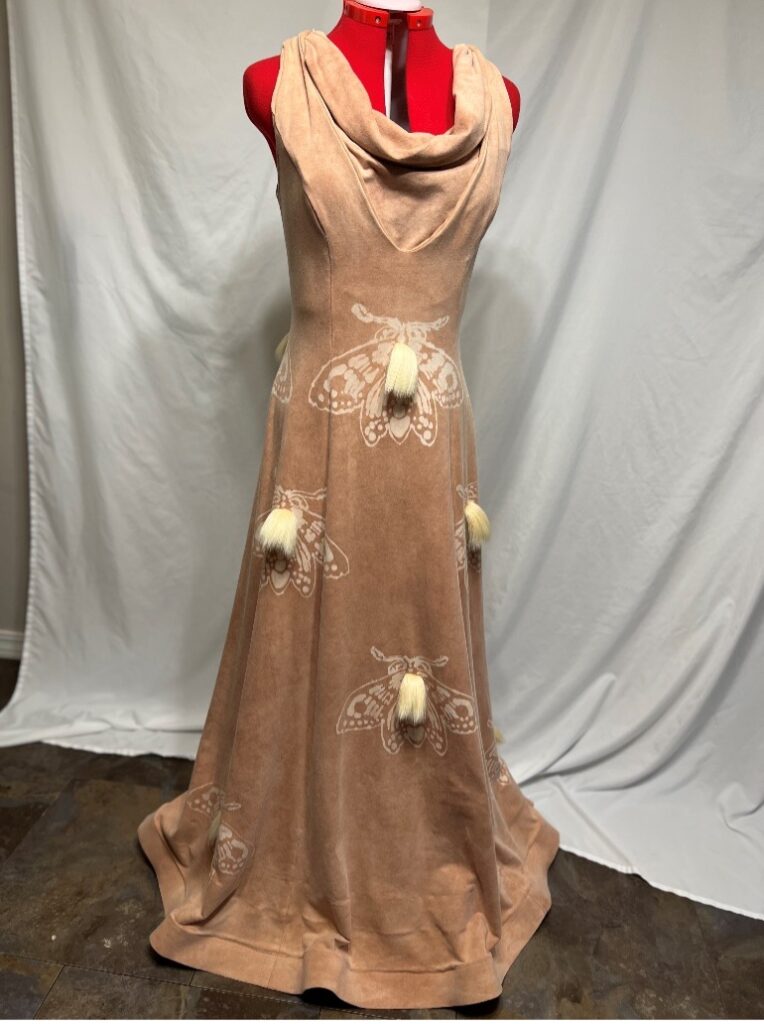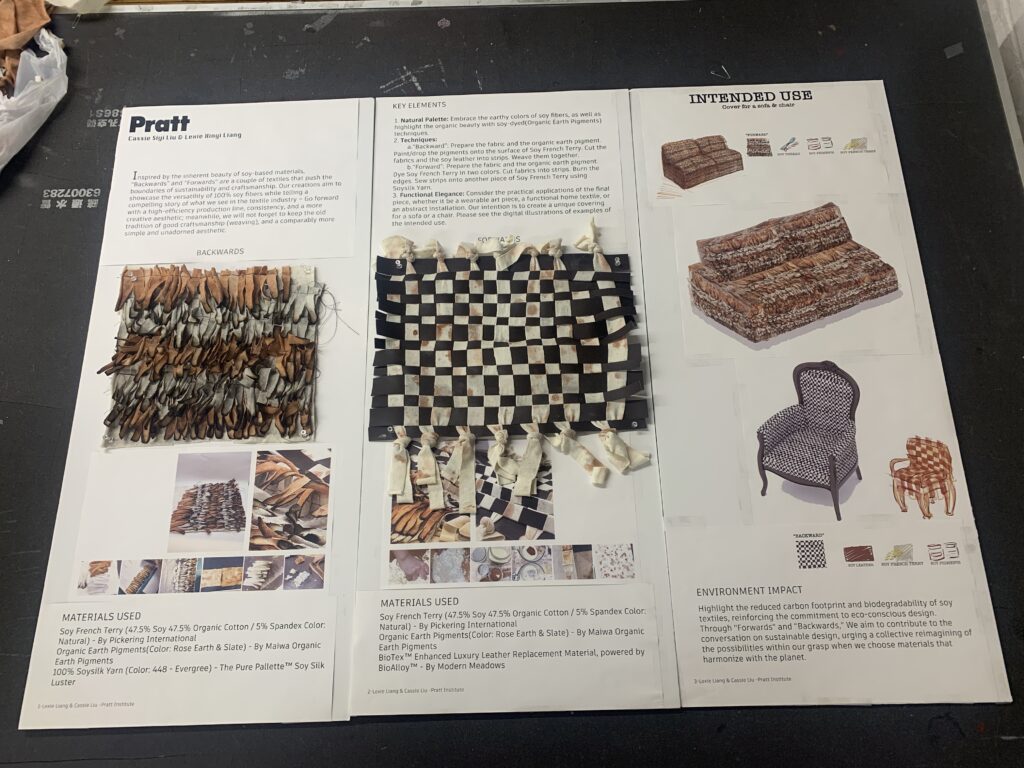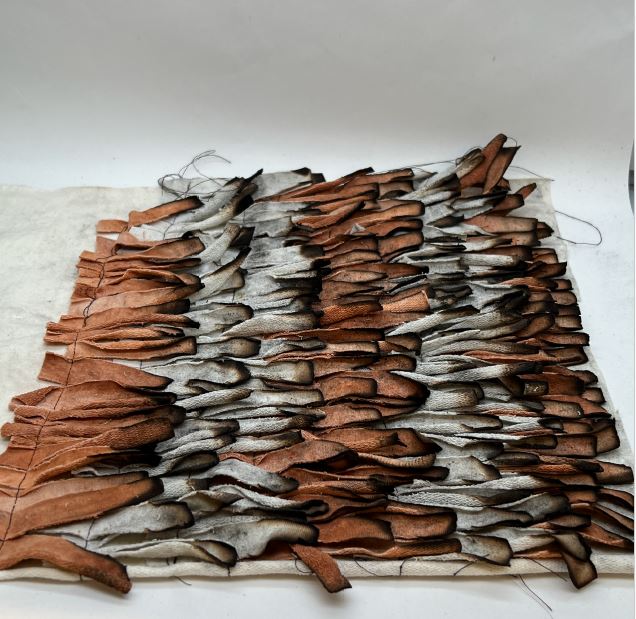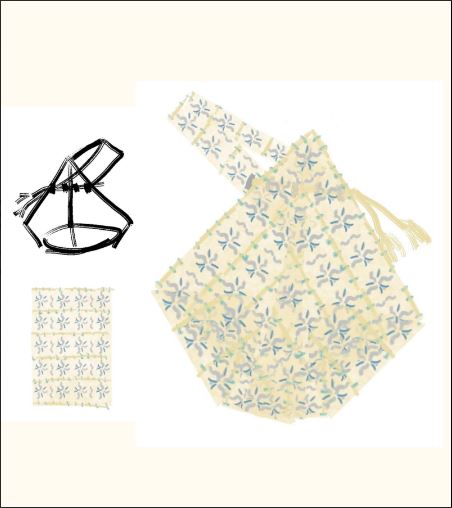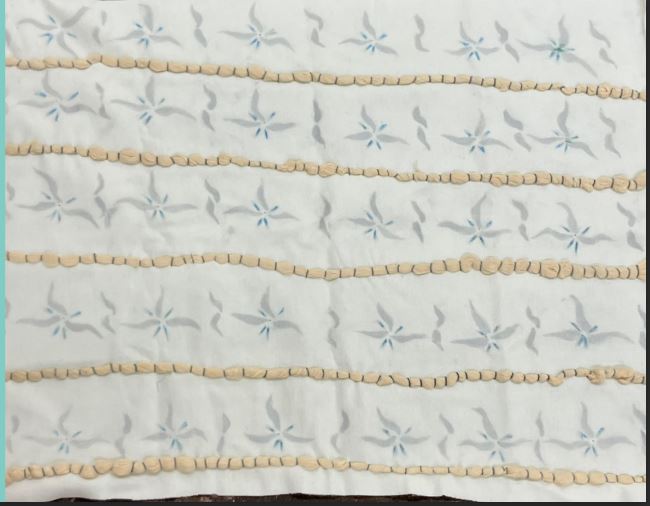Everything we choose to wear reflects something about us — personal taste, style, values and more. That holds true for the way we decorate the spaces where we live and work. We use fabrics everywhere.
But many of the choices made in fashion, interior décor and more don’t fully align with the commonly held value of sustainability.
“Research indicates that the apparel industry is among the top polluters due to the extensive processing involved throughout the supply chain,” says Lance Cheramie, teaching assistant professor in human environmental sciences at the University of Arkansas. He teaches classes in apparel merchandising, global sourcing and sustainability.
Cheramie’s sustainability course in the textile industry encourages students to critically analyze the environmental and social challenges within the apparel supply chain, while developing innovative, ethical solutions that foster both environmental and social well-being. He also emphasizes sustainable design practices, research, collaboration and leadership to inspire positive change in the industry.
At the Pratt Institute, Yoon Jong Chang, adjunct associate professor of fashion design, says sustainability is part of the school’s culture. In her classes, she includes how fashion and what students do with it affects the environment.
“Sustainable fashion is often considered vintage or second-hand clothing,” she says. “But, we are learning sustainability can also be about the textiles themselves, and how we should be sourcing responsibly and appropriately. We want to understand the environmental and social impact of raw materials and the supply chain.”
Both Chang and Cheramie explored new potential to improve sustainability in their industry through overseeing student participation in a unique design competition, Nextile: The Soy In Textile Design Challenge, from U.S. Soy. Last year’s inaugural challenge included students from the Pratt Institute, the University of Arkansas and four other schools, competing for scholarships at the school and national level. Representatives from textile design and U.S. Soy industries judged the results.
Tackling a Creative Challenge
The design sprint asked college students to create a new, sustainable innovation in textile design, using soy. The Nextile Challenge provided each participating individual or team with a design kit filled with soy-based materials for use in textile design, including a soy/cotton blend fabric, soy leather, soy wax, pigments, soy silk yarn and more. Entries needed to incorporate at least three of those elements.
At the same time, students researched U.S. Soy to learn how it is raised and used. Their presentations demonstrated their new understanding of how soy could improve sustainability. And their professors learned alongside them.
“I typically saw soy as food or feed,” Chang says. “Through the lens of my students, I learned a lot more. It was interesting to see soy used to create groundbreaking fabric and alternatives for dyes and other elements in this industry.”
The Nextile Challenge aided her goal of instilling commitment to eco-conscious design in students. Chang appreciates the chance to work with less-known natural material that can benefit humans and the planet.
“Together, we learned that soy-based products are biodegradable, and that using soy reduces carbon footprints,” she adds. “The box of ‘secret ingredients’ encouraged the students to think imaginatively, beyond prints and garments, to supporting lifestyle choices.”
She loves the diversity her students displayed in the first challenge, creating furniture items, garments, a bag and even a tapestry depicting how soybeans grow. Their work showed that sustainable textile design can look current, thoughtful and innovative, while taking into account social and environmental issues that have an impact on the level of sustainable practices.
Exploring U.S. Soy Solutions
Incorporating soy-based products into textile design pushes creativity and hones student skills. Soy doesn’t have fibers, like most natural materials used in design. Nextile Challenge participants learned that despite that, soy can contribute to textiles through fabrics, dyes and more.
“We’re still in the early stages of exploring soy, but it holds the potential to make a major impact,” Cheramie says. “It offers a sustainable alternative to synthetic material in the fashion industry, allowing us to create eco-friendly apparel without compromising on quality.”
He explains that soy-based materials generally have a lower environmental footprint that traditional synthetics, being both renewable and more biodegradable. These materials can also be engineered to possess properties like moisture-wicking, antibacterial resistance and UV protection, making them adaptable for various uses.
“Soy blends effectively with cotton and wool, creating unique textures and patterns that are challenging to achieve with other materials,” he adds. “As my students developed their projects, we realized soy’s untapped potential in design.”
Cheramie finds working with students in this area especially rewarding, but he is also focused on the long-term possibilities of soy-based textiles. He emphasizes the importance of further research and collaboration to fully understand the material’s capabilities in the apparel industry.
He has already taken steps to advance this research with the student who won the national Nextile Design Challenge. Using his research funds, they acquired the necessary materials for her to make a gown, which was showcased at the University of Arkansas Enclothe fashion show, receiving positive feedback.
Nextile 2024
Both Cheramie and Chang are looking forward to the second Nextile Design Challenge. The design sprint will be held this fall, and 23 colleges and universities are slated to participate. The design kits will include two different types of soy-based fabric, soy thread, soy wax and more.
As professors, they appreciate the opportunity to help more students hone and showcase their design skills on a national stage. As these students push their creativity, build their portfolio and explore the global landscape of sustainability in their industry, both Cheramie and Chang believe that what their students take away from the experience will influence how they look for innovative, sustainable solutions throughout their careers. U.S. Soy can be part of that.
